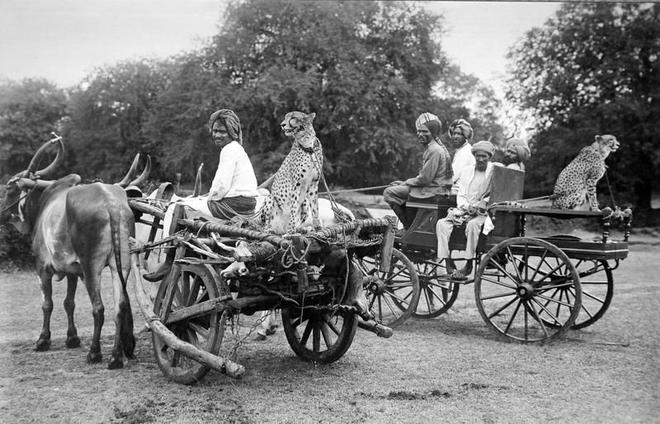Hyderabad has a long and rocky relationship with cheetahs. The spotted cats were kept as pets by the historic city’s nobility as showpieces of royalty, and for the British colonialists, they defined India’s exotic wildlife. The last sighting of a cheetah in India was in Hyderabad in 1957, when the unfortunate animal fell into a well and could not be saved. In 2007, the Indian government set up a spanking new Laboratory for Conservation of Endangered Species (LACONES) on the outskirts of Hyderabad. The laboratory had the mandate of resurrecting extinct animals, including cheetahs.
While setting up the laboratory, Lalji Singh and S. Shivaji had cited success in artificial insemination in some animals. “Success has been reported using laparoscopic intrauterine (surgical) insemination in some of the wild animals such as tiger, cheetah, puma, snow leopard, and Eld’s deer,” they wrote in a filing with the Central Zoo Authority and the Ministry of Environment and Forests. However, the laboratory’s effort to secure germplasm from Iranian cheetahs, considered the closest genetic match to Indian cheetahs, for their breeding programme, did not succeed. The closest they came was to breeding mouse deer and releasing them in the Amrabad forest.

But before that, Hyderabad nobility showed off their pet cheetahs and posed for photographs before and after hunts.
“Almost all the nobility in Hyderabad had cheetahs as pets. They were as common as the horses which numbered in the dozens. They were used for hunting black buck and deer on the plains of Andhra Pradesh in Kurnool, Anantapur, and Banginpally,” says Shafat Ali Khan, whose grandfather Sultan Ali Khan had cheetahs as pets at their Moula Ali home in the 1930s-40s. “My grandmother, Antul Murtuza Begum, was the princess of Banginpally and there must have been a family get-together before the hunts,” says Mr. Khan, whose house in Hyderabad is decorated with trophies from hunting across generations. “Before the hunt, the animals would be kept free inside homes and fed beef, lamb, and chicken. They used to be exercised daily. For hunting, they would be transported in carts.”
Some of the cheetahs developed a taste for Hyderabadi food.
Also read | When tigers and cheetahs roamed free in Hyderabad
Major Afsur Jung who was Commander-in-Chief of the Hyderabad Army, and accompanied the Nizam Mahbub Ali Khan everywhere, writes about an abandoned pet cheetah developing a fondness for Hyderabadi biryani in 1893. “It was next sighted at Koh-e-Moula… Here at that time, the Nizam was camping, it being the month of Rabi-ul-Awwal (11th of which is the Prophet's birthday) where maunds of biryani (or pulao) were being cooked every day for the poor. The bones were piled up behind the kitchen and this provided a feast for the cheetah. When someone sighted the animal and informed the king, His Highness ordered the animal to be trapped and kept in a cage and was to be fed the choicest meat till it could eat no more,” he wrote in his memoirs.
Earlier, Afsur Jung had spotted the same cheetah at Adikmet (now Osmania University) chasing a hare. Later, he heard reports about it living near a village.
Hunting with cheetahs, or coursing with the cheetahs as it was called, was not everyone’s cup of tea. British Viceroy Charles Hardinge visited Hyderabad in September 1911. He went for a hunt with Nizam Osman Ali Khan and described the experience.
“The hood was at once taken off one of the cheetahs, which spotted the herd of buck immediately and, on being released from its chain, dashed off after them like an arrow from a bow, and we all galloped after the cheetah as fast as we could. It was evident at once that the cheetah had a far greater turn of speed than the buck, for although the buck had a long start they were soon overhauled by the cheetah, which suddenly sprung at the neck of one of the biggest buck and brought it down,” writes Hardinge in his On Plain and Hill.
He ends the narration with: “It was an interesting show, but I never wanted to see it again.”







